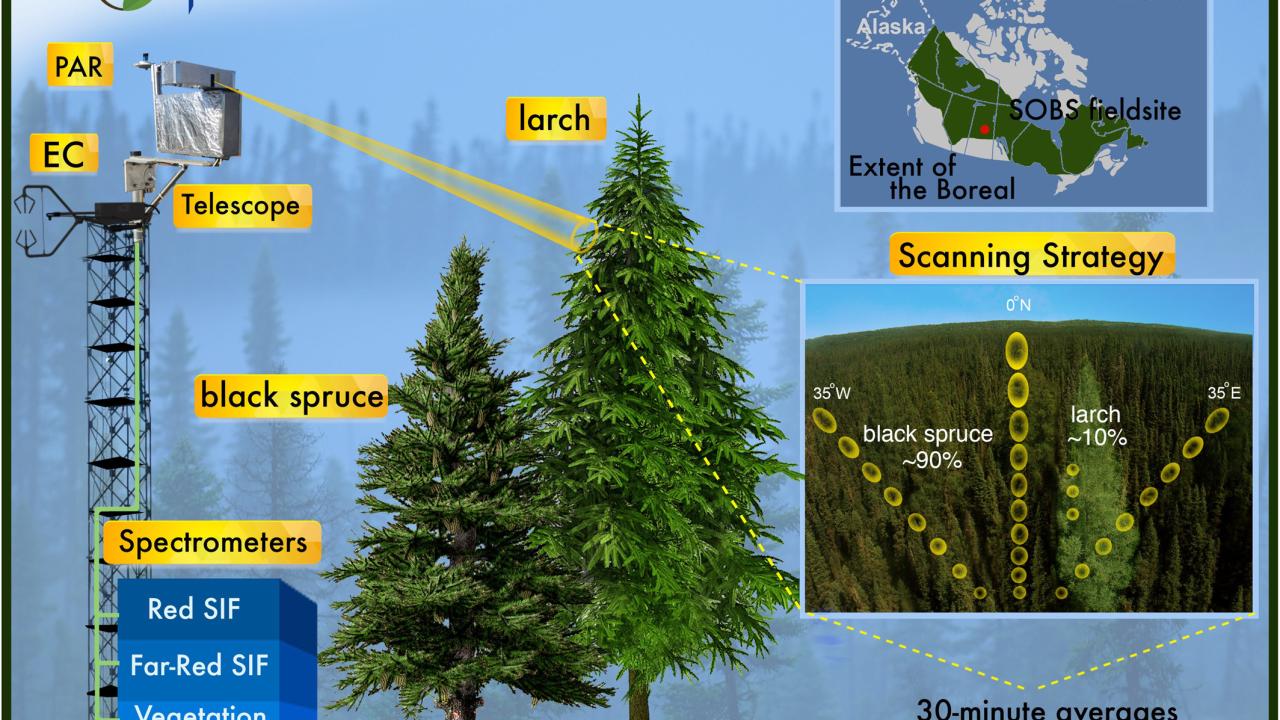
New paper from NASA ABoVE project investigates seasonality of vegetation indices, SIF and GPP
Remote sensing can help us better understand plants' role in the global carbon cycle. In particular, a small light signal emitted by plants during photosynthesis, known as solar-induced chlorophyll fluorescence (SIF), is a promising remotely sensed proxy for carbon uptake due to its strong relationship with gross primary productivity (GPP, ecosystem carbon assimilated during photosynthesis) when observed by satellite. Recent work at the leaf and tower-scale has highlighted differences in the relationship between SIF and GPP, thereby raising questions over the utility of SIF for this purpose. We collect tower-based SIF and GPP measurements from the southern end of the boreal forest to clarify their connection in boreal ecosystems. We find that temporal resolution is critical for understanding the nuances between SIF and GPP and that light and temperature effects complicate their relationship. Additionally, the relationship between SIF and GPP has a seasonal dependency that should be considered when using SIF. Taken together, our results suggest that SIF is a powerful tool for estimating carbon assimilation in boreal forests, but some key considerations need to be addressed for properly interpreting this faint signal.
Pierrat, Z., Magney, T., Parazoo, N. C., Grossmann, K., Bowling, D. R., Seibt, U., ... & Stutz, J. (2022). Diurnal and seasonal dynamics of solar‐induced chlorophyll fluorescence, vegetation indices, and gross primary productivity in the boreal forest. Journal of Geophysical Research: Biogeosciences, 127(2), e2021JG006588. https://doi.org/10.1029/2021JG006588
